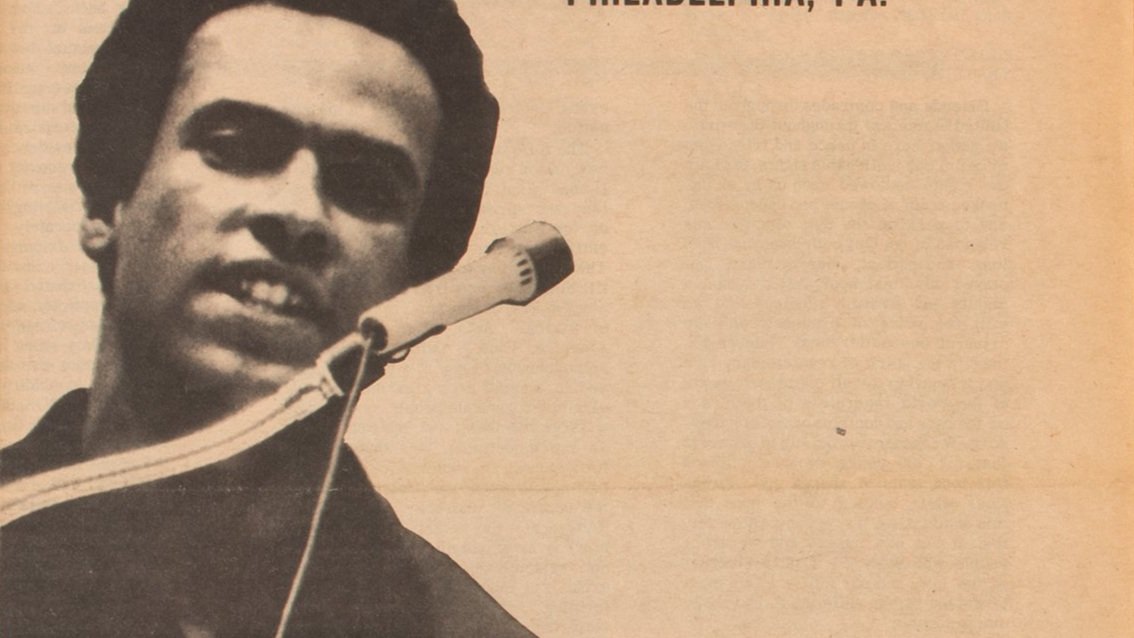
Prison, Where is Thy Victory? (1970)
An essay by Huey P. Newton written while incarcerated and published by The Black Panther on January 3rd, 1970.
On 12 July 1969, Huey P. Newton, cofounder of the Black Panther Party, wrote “Prison, Where Is Thy Victory?,” a socialist critique of America’s penal system that focused on its inability to rehabilitate prisoners.
The Black Panther Party (BPP) was founded in Oakland, California, in October 1966. Two black activists, Bobby Seale and Huey P. Newton, draft an initial ten point manifesto. Item 8 states that the Black Panthers demand that all blacks imprisoned in federal or state prisons be released. They could not be judged fairly by an unequal and racist justice system. Very quickly, the BPP came into the crosshairs of the US security agencies, and several leaders were imprisoned - some had already experienced the experience of imprisonment, such as Eldridge Cleaver, detained nine years before becoming the party's information minister.
The aim of the BPP is to use seclusion as a means of developing propaganda.In pre-trial detention since 1967 then sentenced in 1968, Huey P. Newton, author of the text below and leading party figure, is a prisoner in the Los Padres establishment in California. He wrote or recorded from his cell the texts intended to appear inThe Black Panther , the newspaper and the voice of the party, the vehicle for educating the masses.
The following text is the one which deals most directly with prison. It is taken from a collection of texts published by Philip S. Foner, the first edition of which dates from 1970. The book has remained a classic, as evidenced by the recent reissue used here. The Black Panthers Speak was indeed the first work bringing together a large number of statements, instructions, speeches of the Black Panthers themselves.
When a person studies mathematics, he learns that there are many mathematical laws which determine the approach he must take to solving the problems presented to him.
In the study of geometry, one of the first laws a person learns is that “the whole is not greater than the sum of its parts.” This means simply that one cannot have a geometrical figure such as a circle or a square which in its totality contains more than it does when broken down into smaller parts. Therefore, if all the smaller parts add up to a certain amount, the entire figure cannot add to a larger amount. T
he prison cannot have a victory over the prisoner because those in charge take the same kind of approach to the prisoner and assume if they have the whole body in a cell that they have there all that makes up the person. But a prisoner is not a geometrical figure and an approach which is successful in mathematics is wholly unsuccessful when dealing with human beings.
In the case of the human, we are not dealing only with the single individual, we are also dealing with the ideas and beliefs which have motivated him and which sustains him, even when his body is confined. In the case of humanity, the whole is much greater than its parts, because the whole includes the body which is measurable and confineable, and also the ideas which cannot be measured and which cannot be confined. The ideas are not only within the mind of the prisoner where they cannot be seen nor controlled, the ideas are also within the people. The ideas which can and will sustain our movement for total freedom and dignity of the people cannot be imprisoned for they are found in the people, all the people, wherever they are.
As long as the people live by the ideas of freedom and dignity there will be no prison which can hold our movement down. Ideas move from one person to another in the association of brothers and sisters who recognize that a most evil system of capitalism has set us against each other, when our real enemy is the exploiter who profits from our poverty.
When we realize such an idea then we come to love and appreciate our brothers and sisters who we may have seen as enemies, and those exploiters who we may have seen as friends revealed for what they truly are to all oppressed people. The people are the idea; the respect and dignity of the people, as they move toward their freedom is the sustaining force which reaches into and out of the prison. The walls, the bars, the guns and guards can never encircle or hold down the idea of the people. And the people must always carry forward the idea which is their dignity and their beauty.
The prison operates with the idea that when it has a person’s body it has his [or her] entire being — since the whole cannot be greater than the sum of its parts. They put the body in a cell and seem to get some sense of relief and security from that fact. The idea of prison victory, then, is that when the person in jail begins to act, think, and believe the way they want him [or her] to, then they have won the battle and the person is then “rehabilitated.” But this cannot be the case because those who operate the prisons have failed to understand the types of people they attempt to control. Therefore, even when the prison thinks it has won victory, there is no victory.
There are two types of prisoners. The largest number are those who accept the legitimacy of the assumption upon which the society is based. They wish to acquire the same goals as everybody else; money, power, greed, and conspicuous consumption. In order to do so, however, they adopt techniques and methods which the society has defined as illegitimate. When this is discovered, such people are put in jail.
They may be called “illegitimate capitalists” since their aim is to acquire everything this capitalist society defines as legitimate. The second type of prisoner is the one who rejects the legitimacy of the assumptions upon which the society is based. He argues that the people at the bottom of the society are exploited for the profit and advantage of those at the top. Thus, the oppressed exist, and will always be used to maintain the privileged status of the exploiters. There is no sacredness, there is no dignity in either exploiting or being exploited.
Although this system may make the society function at a high level of technological efficiency, it is an illegitimate system since it rests upon the suffering of humans who are as worthy and as dignified as those who do not suffer. Thus, the second type of prisoner says that the society is corrupt and illegitimate and must be overthrown. This second type of prisoner is the political prisoner. They do not accept the legitimacy of the society and cannot participate in its corrupting exploitation, whether they are in the prison or one the block.
The prison cannot gain a victory over either type of prisoner no matter how hard it tries. The “illegitimate capitalist” recognizes that if he plays the game the prison wants him to play, he will have his time reduced and be released to continue his activities. Therefore, he is willing to go through the prison programs and do the things he is told. He is willing to say the things the prison authorities want to hear.
The prison assumes he is “rehabilitated” and ready for the society. The prisoner has really played the prison’s games so that he can be released to resume pursuit of his capitalistic goals. There is no victory, for the prisoner from the beginning accepted the idea of the society. He pretends to accept the idea of the prison as part of the game he has always played.
Back to Table of contents

